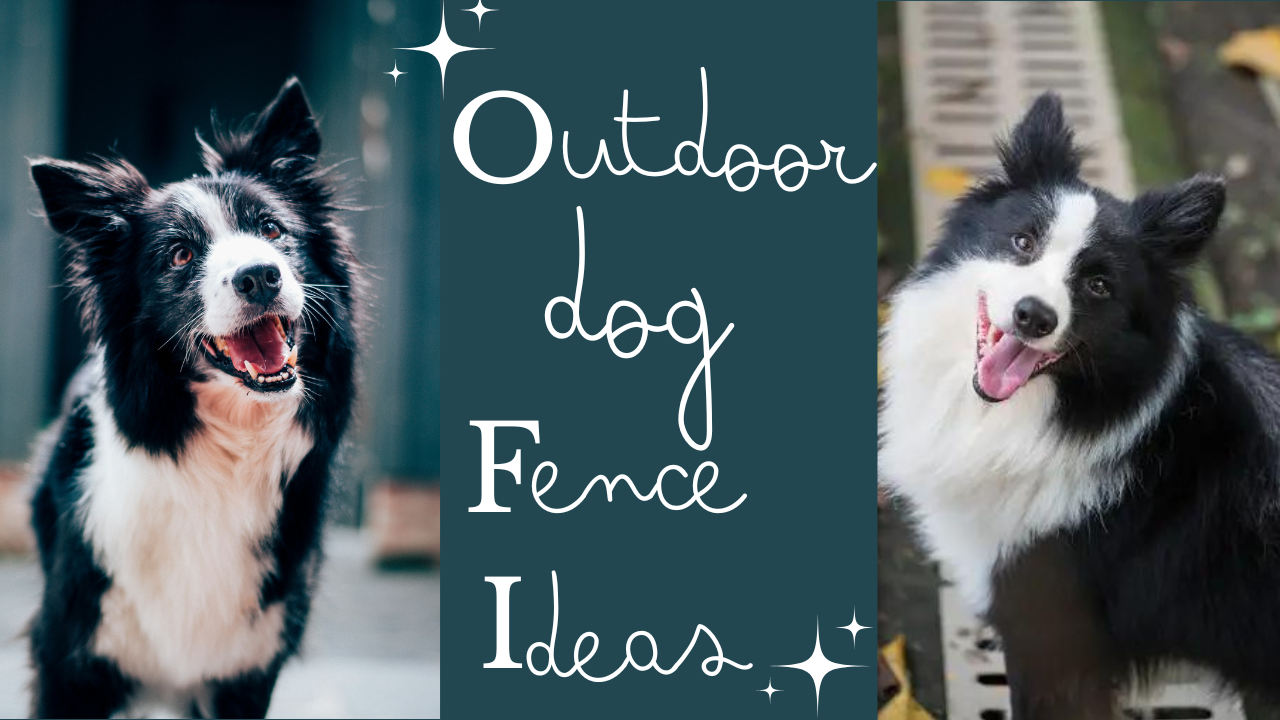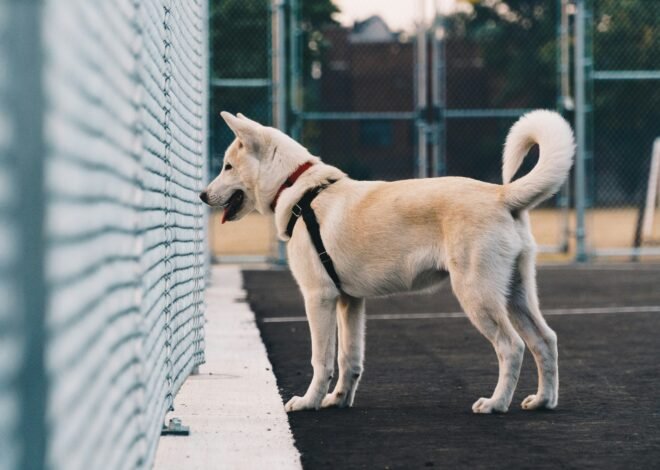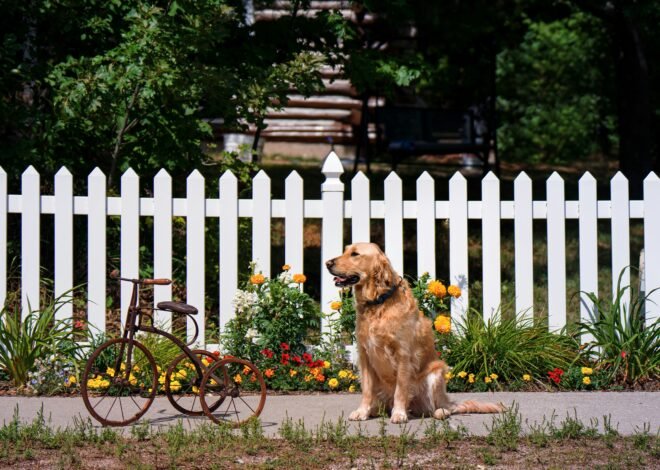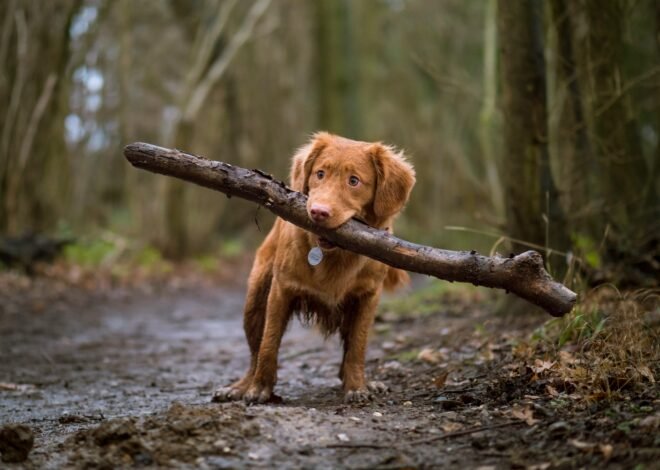
Outdoor Dog Fence Ideas: Safe and Secure Options
Creating a secure and enjoyable outdoor space for your dog is crucial for their wellbeing. A good outdoor dog fence provides the perfect balance of freedom and safety, allowing your pet to roam without the risk of wandering off or encountering dangers. Here, we explore various outdoor dog fence ideas, each designed to offer both security and peace of mind.
Benefits of an Outdoor Dog Fence
Installing a dog fence in your yard has several advantages:
- Safety: Prevents your dog from escaping and encountering hazards like traffic or wild animals.
- Freedom: Allows your dog to enjoy outdoor activities without constant supervision.
- Exercise: Provides a designated area for your dog to run and play, promoting physical health.
- Behavior Training: Helps in teaching your dog boundaries and proper behavior.
Traditional Fences
Wood Fences
Wood fences are a classic choice for many dog owners. They offer privacy and a strong barrier that can be customized to fit any yard. Painted or stained wood fences can complement your home’s aesthetic, and their height can be adjusted to prevent dogs from jumping over.
Pros:
- Customizable
- Provides privacy
- Aesthetically pleasing
Cons:
- Requires regular maintenance
- Can be expensive
Vinyl Fences
Vinyl fences are durable and low maintenance, making them a popular option. They are available in various styles and colors and can withstand harsh weather conditions without rotting or fading.
Pros:
- Low maintenance
- Weather resistant
- Variety of styles
Cons:
- Can be more expensive than wood
- Limited customization options
Metal Fences
Metal fences, such as wrought iron or aluminum, offer strength and durability. They are resistant to chewing and can be designed with decorative elements to enhance your yard’s appearance.
Pros:
- Very durable
- Resistant to chewing
- Decorative options available
Cons:
- Can be costly
- Less privacy compared to wood or vinyl
Electric Fences
Electric fences create an invisible boundary using a buried wire and a receiver collar. When your dog approaches the boundary, the collar delivers a mild static correction. Proper training is essential to ensure your dog understands and respects the boundaries.
Pros:
- Unobtrusive
- Effective for large areas
- Relatively affordable
Cons:
- Requires training
- May not be suitable for all dogs
Wireless Fences
Wireless fences are similar to electric fences but do not require a buried wire. They use a central transmitter to create a circular boundary. The range can be adjusted to fit your yard size.
Pros:
- Easy to install
- Portable
- Adjustable range
Cons:
- Circular boundary may not fit all yard shapes
- Can be affected by terrain and obstructions
Portable Fences
Mesh Fences
Mesh fences are lightweight and portable, making them ideal for temporary setups. They are easy to assemble and disassemble, and perfect for small to medium sized dogs.
Pros:
- Portable
- Easy to set up
- Affordable
Cons:
- Less durable
- Not suitable for large or strong dogs
Exercise Pens
Exercise pens, or xpens, are portable enclosures that can be set up in various shapes. They are great for creating a safe play area within a larger yard or for use while traveling.
Pros:
- Versatile
- Easy to assemble
- Portable
Cons:
- Limited space
- Not suitable for very active dogs
Tips for Maintaining Your Dog Fence
Maintaining your dog fence is crucial to ensure it remains effective and safe for your pet. Here are some tips to keep your fence in top condition:
- Regular InspectionsConduct regular inspections of your fence to check for any damage or wear. Look for loose panels, broken wires, or gaps that your dog could slip through. For electric and wireless fences, check that the transmitter and receiver are functioning correctly.
- Seasonal MaintenanceDifferent seasons bring different challenges for your dog fence. In the winter, ensure that snow and ice are not damaging the fence or creating escape routes for your dog. In the summer, check for any signs of wear from sun exposure and heat.
- Repair and ReinforcePromptly repair any damage to the fence. For traditional fences, this might mean replacing broken panels or tightening loose screws. For invisible fences, ensure that any breaks in the wire are fixed immediately. Reinforce weak spots to prevent future issues.
- Landscaping ConsiderationsKeep vegetation trimmed around the fence to prevent it from causing damage or providing escape routes. Trees, shrubs, and other plants can grow into the fence and create gaps or weaknesses.
- Training and SupervisionEven with a secure fence, continue to supervise your dog, especially during the initial period after installation. Regular training sessions will reinforce the boundaries and help your dog understand the limits of their play area.
Additional Resources
For more information on choosing the right dog fence, check out these resources:
- American Kennel Club https://www.akc.org/expertadvice/homeliving/typesofdogfences/ : Offers an indepth look at different types of dog fences and their benefits.
- PetMD https://www.petmd.com/dog/care/evr_dg_dogfenceoptionswhichisrightforyou : Provides a comparison of various dog fence options, helping you decide which is right for your pet.
Conclusion
Selecting the right outdoor dog fence ensures your dog’s safety and your peace of mind. Whether you opt for a traditional, invisible, or portable fence, consider your dog’s needs and your yard’s layout. By choosing the appropriate fence type and following proper maintenance and training techniques, you can create a secure and enjoyable environment for your furry friend. Do You Know The Benefits Of Dog Parks: Socialization And Exercise For Your Pet ? Happy fencing!


